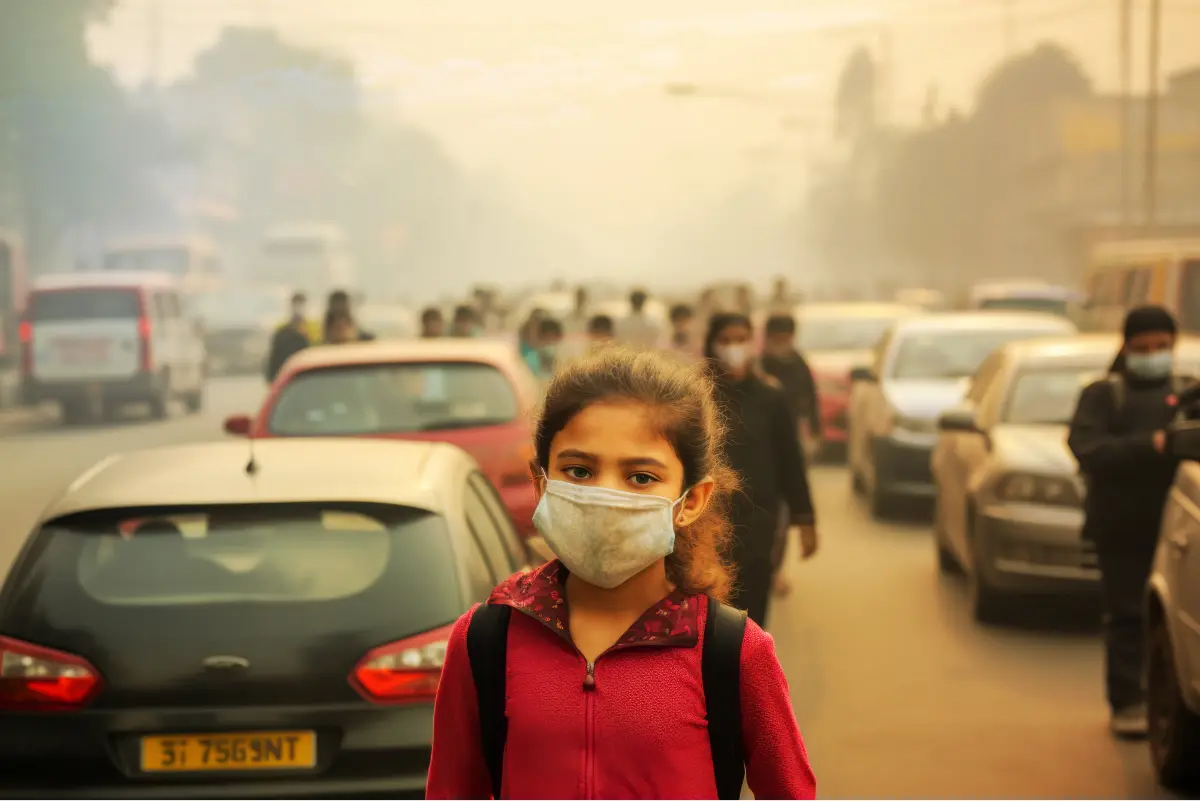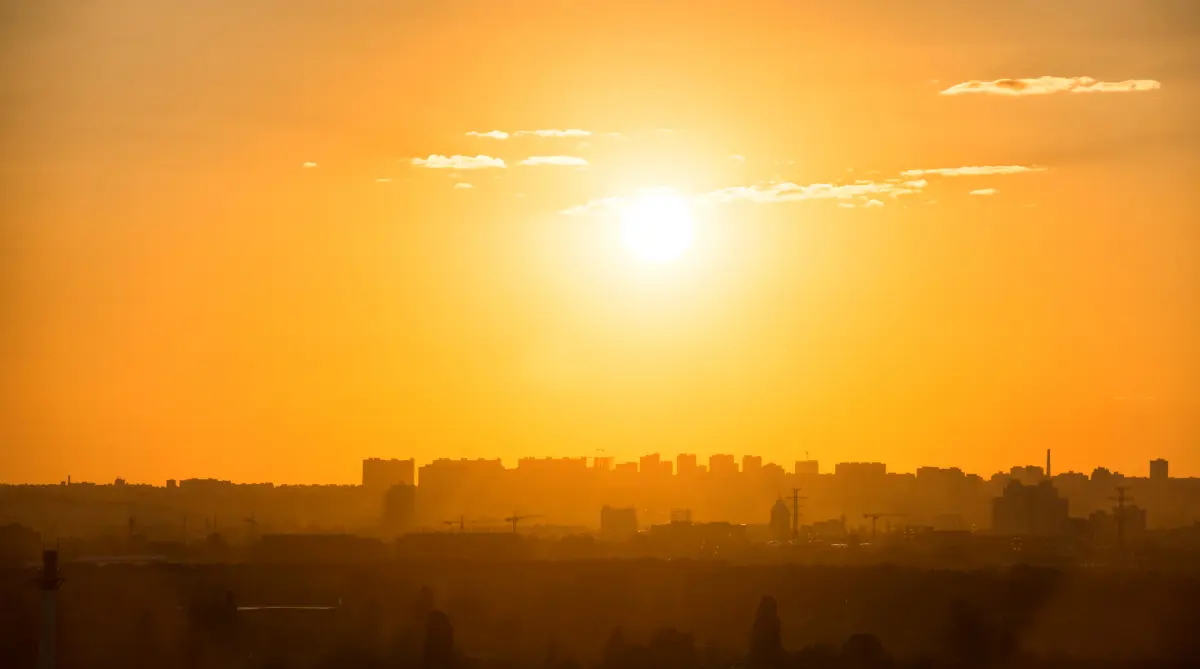Delhi, the bustling capital of India, is experiencing unprecedented temperature extremes in 2024. With temperatures soaring to record levels, the city is grappling with severe heatwaves that are disrupting daily life and posing significant health risks. These extreme weather conditions are a manifestation of broader climate change impacts. This blog explores the causes, effects, and potential solutions to the heatwave crisis in Delhi, providing a detailed understanding of how climate change is reshaping life in one of the world’s most populous cities.
Delhi Temperature Record-Breaking in 2024
Delhi has always been known for its hot summers, but 2024 has set new records. Here are some startling facts and figures about the temperature extremes in Delhi this year:
- Record-Breaking Temperatures: On May 29, 2024, Mungeshpur, Delhi recorded its highest temperature in history at 52.3°C, surpassing the previous high of 48.0°C set in 2019. This marks a significant increase in the city’s heat levels.
- Prolonged Heatwaves: The city experienced a continuous heatwave for over ten days in May, with daily temperatures exceeding 45°C. This prolonged period of extreme heat is unprecedented.
- Nighttime Temperatures: Even at night, temperatures have remained unusually high, often not dropping below 30°C. This lack of relief exacerbates the health impacts of the heatwave.

Causes of Extreme Heatwaves in Delhi
Several factors contribute to the extreme heatwaves in Delhi:
- Global Warming: The steady rise in global temperatures due to increased greenhouse gas emissions is a primary driver. The average global temperature has increased by approximately 1.1°C above pre-industrial levels, with significant local impacts.
- Urban Heat Island Effect: Delhi’s rapid urbanization has transformed it into a massive urban heat island. Concrete structures, asphalt roads, and reduced green spaces absorb and retain heat, making the city significantly warmer than its rural surroundings.
- Deforestation: The loss of green cover in and around Delhi has exacerbated the impact of heatwaves. Trees play a crucial role in regulating temperatures by providing shade and facilitating evapotranspiration. The reduction in forested areas has led to higher surface temperatures and diminished natural cooling.
- Altered Weather Patterns: Changes in weather patterns due to climate change have disrupted the usual cooling effects of the monsoon. Delays and deficiencies in monsoon rains lead to extended periods of high temperatures.
Socio-Economic Impact of Heatwaves in Delhi
The heatwaves in Delhi have wide-ranging socio-economic impacts:
- Health Risks: The health impacts of heatwaves are severe, particularly for vulnerable populations such as the elderly, children, and those with pre-existing health conditions. In 2024, hospitals in Delhi reported a 20% increase in cases of heat-related illnesses, including heat exhaustion, heatstroke, and dehydration.
- Agricultural Impacts: Although Delhi itself is not primarily agricultural, the heatwaves affect the food supply chain from neighboring regions. Crop failures and reduced yields due to high temperatures increase food prices in Delhi. For instance, the price of vegetables like tomatoes and spinach saw a 30% hike in May 2024.
- Energy Demand and Supply: The demand for electricity surges during heatwaves as residents rely on air conditioning and cooling systems. This increased demand often leads to power outages. In May 2024, Delhi experienced multiple power cuts, some lasting up to 8 hours, disrupting daily life and economic activities.
- Water Scarcity: Water scarcity is a significant issue during heatwaves. Higher temperatures increase evaporation rates, depleting water bodies and exacerbating water shortages. In 2024, many parts of Delhi faced severe water shortages, with tankers supplying water to areas with critical shortages.
- Economic Losses: The economic impact of heatwaves is substantial. Reduced agricultural output, increased healthcare costs, and disruptions to daily life contribute to significant financial losses. Businesses, especially those dependent on outdoor activities, reported a 15% drop in revenue during the heatwave period.

Climate Change and Its Role in Intensifying Heatwaves
Climate change is a critical factor in the increasing frequency and intensity of heatwaves in Delhi:
- Rising Global Temperatures: The steady rise in global temperatures is a primary driver of heatwaves. According to the Intergovernmental Panel on Climate Change (IPCC), the average global temperature has already increased by about 1.1°C above pre-industrial levels, leading to more extreme weather conditions.
- Extreme Weather Events: Climate change is associated with an increase in the frequency and intensity of extreme weather events, including heatwaves. These events are becoming more severe and prolonged, leading to greater health risks and socio-economic impacts.
- Changes in Monsoon Patterns: Alterations in monsoon patterns due to climate change can exacerbate heat conditions. Delayed or deficient monsoons result in extended periods of high temperatures, further stressing water resources and agricultural productivity.
Mitigation and Adaptation Strategies to Prevent Delhi Heatwave
Addressing the challenges posed by heatwaves in Delhi requires a multi-faceted approach involving both mitigation and adaptation strategies:
- Reducing Greenhouse Gas Emissions: Transitioning to renewable energy sources, improving energy efficiency, and adopting sustainable practices are crucial to reducing greenhouse gas emissions. Policies and initiatives aimed at curbing emissions can help mitigate the impact of climate change and heatwaves.
- Afforestation and Reforestation: Increasing forest cover through afforestation and reforestation programs can help regulate temperatures and provide natural cooling. Trees play a vital role in absorbing carbon dioxide and reducing the urban heat island effect.
- Urban Planning: Implementing heat-resilient urban planning measures, such as creating green spaces, promoting cool roofs and pavements, and enhancing water management systems, can help cities adapt to heatwaves. Urban planning should prioritize climate resilience to protect vulnerable populations.
- Early Warning Systems: Developing and implementing early warning systems for heatwaves can help communities prepare and respond effectively. Public awareness campaigns and timely dissemination of information can reduce the health risks associated with heatwaves.
- Water Conservation: Promoting water conservation practices, such as rainwater harvesting, efficient irrigation techniques, and wastewater recycling, can help alleviate water scarcity during heatwaves. Sustainable water management is essential to ensure a reliable water supply.

Conclusion
The current heatwaves in Delhi underscore the urgent need to address the challenges posed by climate change. The record-breaking temperatures, including the unprecedented 50.2°C recorded on May 29, 2024, highlight the severity of the situation and the necessity for immediate action. The socio-economic impacts of heatwaves, including health risks, agricultural losses, energy strain, and water scarcity, necessitate a comprehensive and sustained response.
Mitigation and adaptation strategies, such as reducing greenhouse gas emissions, increasing forest cover, and implementing heat-resilient urban planning, are essential to combat the effects of heatwaves. Collaborative efforts involving governments, communities, and individuals are crucial to building a sustainable and resilient future.
As Delhi continues to face the brunt of climate change, it is imperative to prioritize climate action and work towards a more sustainable and heat-resilient nation. The lessons learned from the current heatwaves should serve as a wake-up call for urgent and sustained efforts to address the climate crisis and protect the well-being of future generations. By taking proactive measures, we can mitigate the impact of heatwaves and ensure a healthier and more sustainable environment for all.